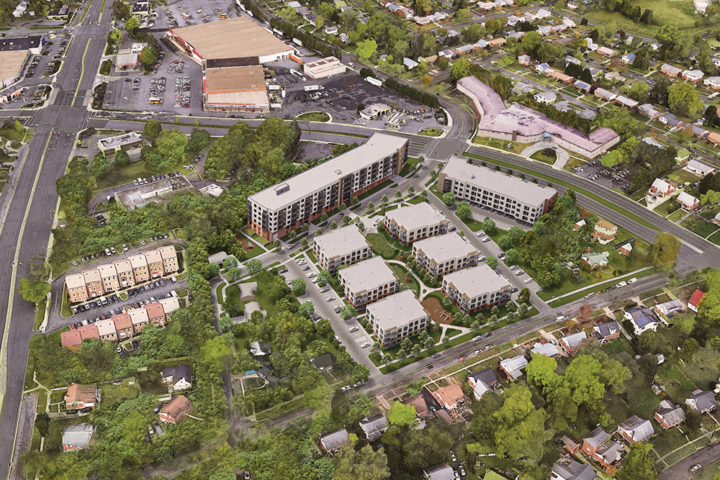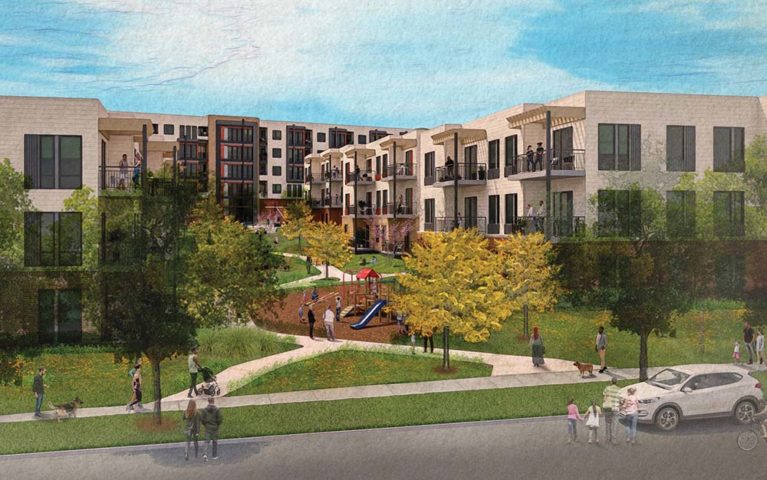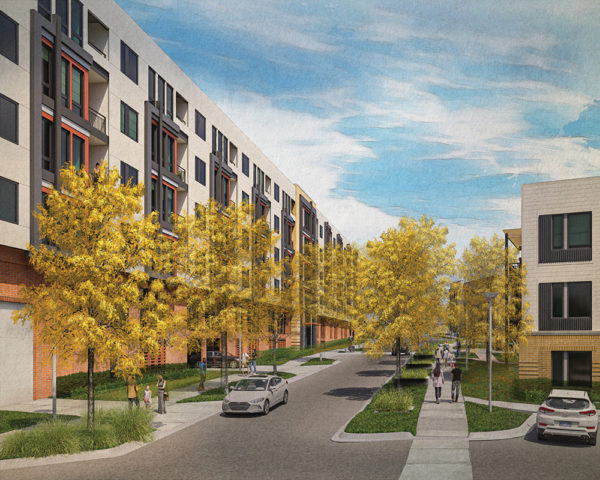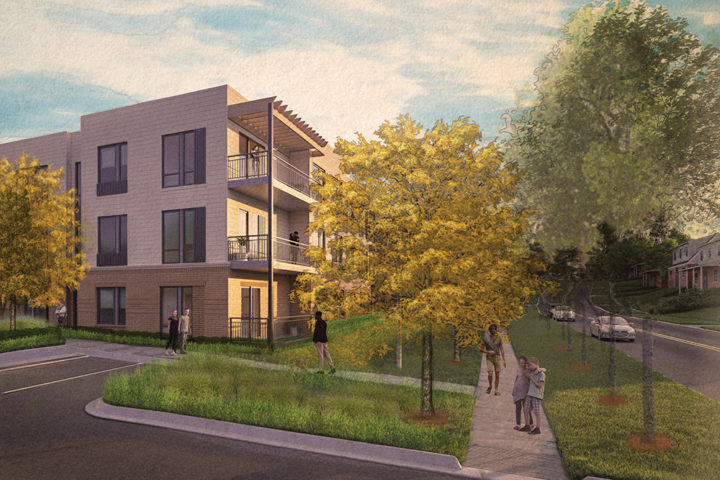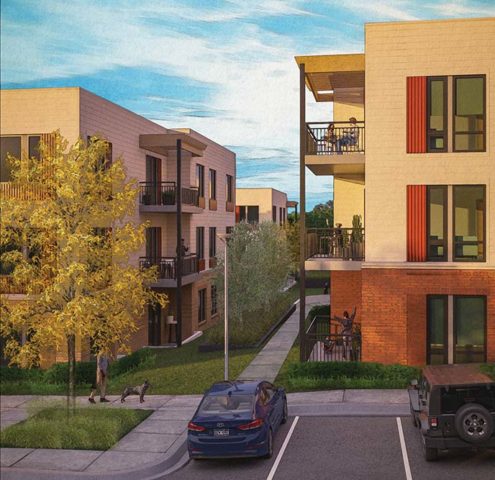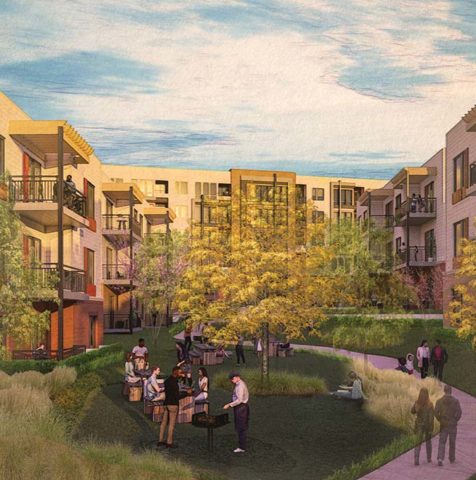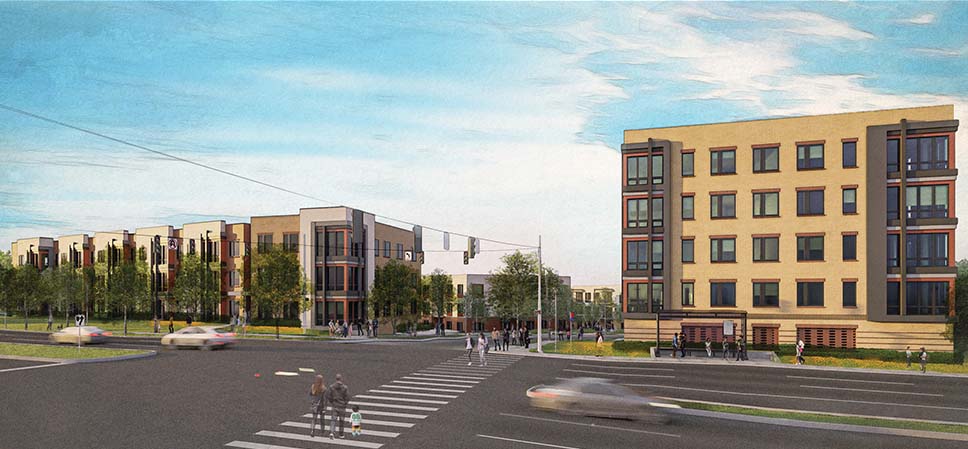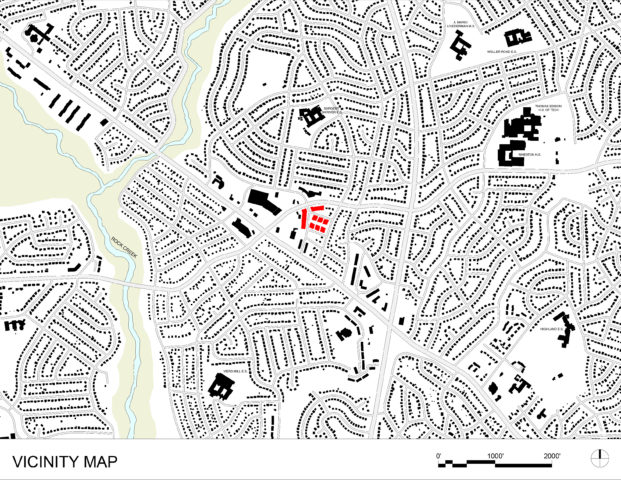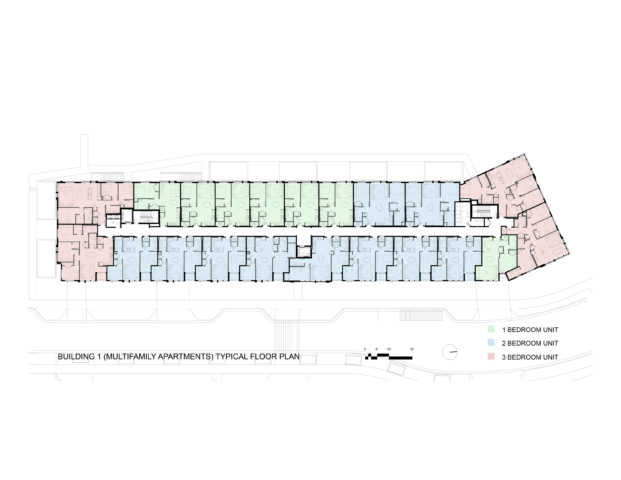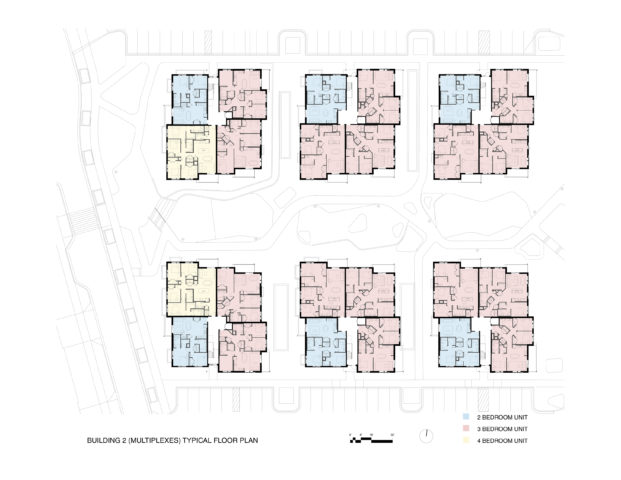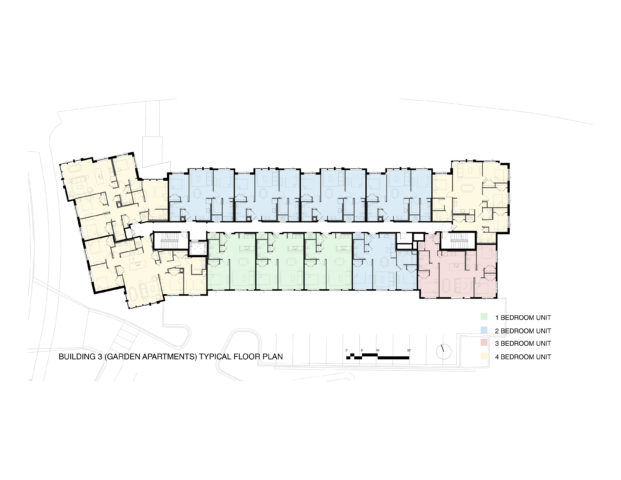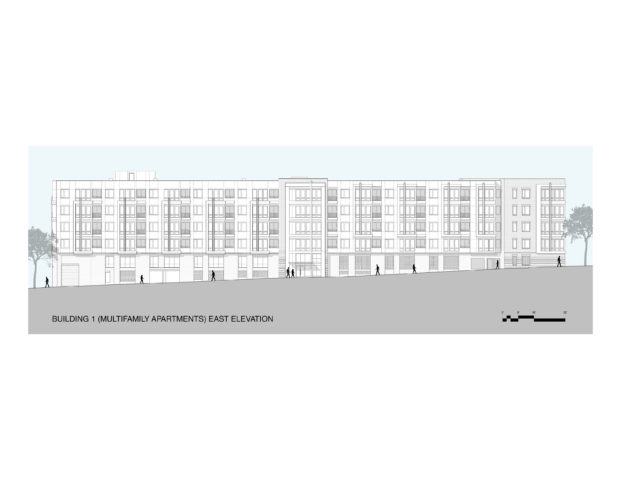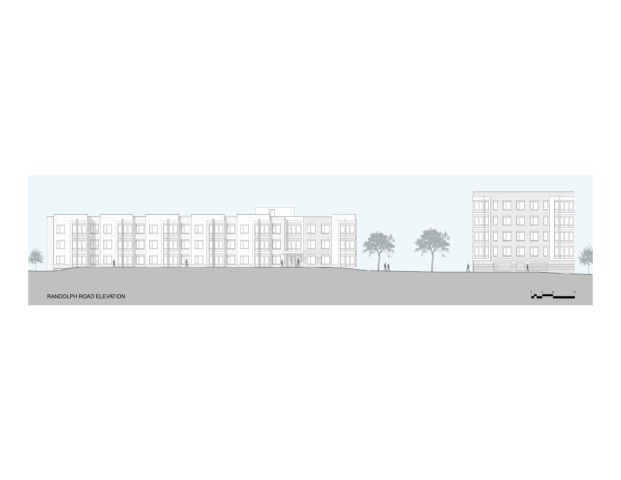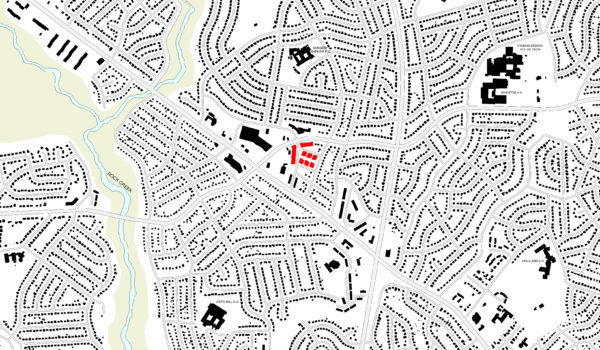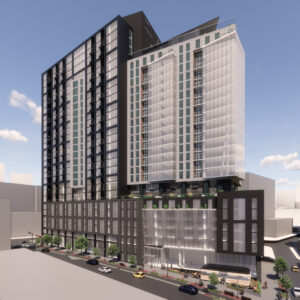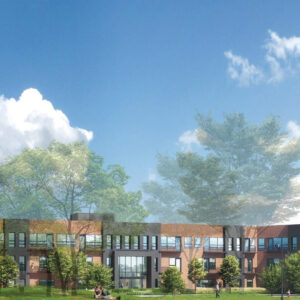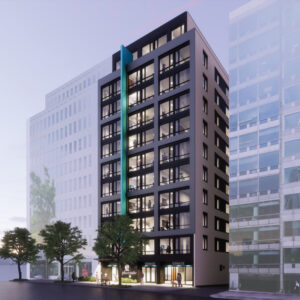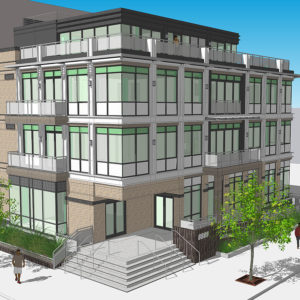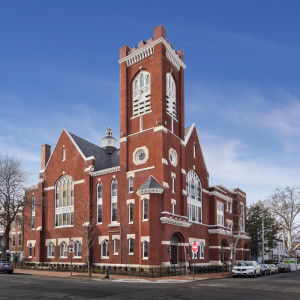Randolph Road project is a current 6.07-acre underdeveloped site to be re-envisioned as a part of the Veirs Mill Corridor Master Plan which seeks to better connect communities to improved transportation and infrastructure. The team of designers and community stakeholders developed and studied multiple schemes aligned with Montgomery County’s vision. The design looks to further capitalize on its prominent location at the intersection of Randolph Road and Veirs Mill Road – the commercial core between Rockville and Wheaton – by adding density, diverse housing opportunities, affordable housing, and community spaces. Single-family housing immediately abuts the central commercial core as it exists on the site, leaving a clear housing typology gap. To reconcile this problem, a spectrum of housing typologies including single-family homes and multiplexes are proposed to create a variety of housing options all organized along a 1/2-acre park, creating a total of 192 affordable housing units that step down to the neighborhood. New apartment buildings activate the west edge of the site adding density and a mix of uses closest to the commercial core. Single family housing is used along the southern edge to match the existing neighborhood context. These houses were developed in collaboration with Habitat for Humanity. The remaining multiplexes: 12-unit, 3-story buildings that span between high- and low-density housing fill the “missing middle” housing gap. This new typology allows for human-scale interaction and connection along the linear park with framed views and family-sized decks to engage with park activities.
The architecture creates a consistent language among the various housing types envisioned on the site; consistent building materials are used throughout the site to create a cohesiveness to the development between its gradient of housing types. Consistent brick, aluminum panels, window-types and color palette add to the cohesiveness of the design and the emphasis on bringing the built environment down to a human scale. Together, these design decisions create a context and community-driven affordable project that will add to its larger context while providing necessary housing to the people of Montgomery County.

